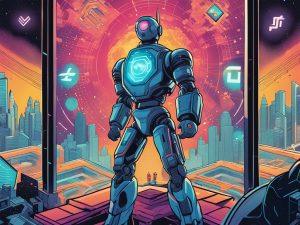OpenAI Unveils Sora: An AI Model for Creating Captivating Videos
OpenAI has introduced Sora, a new artificial intelligence model that can generate engaging videos based on text instructions. Although other companies like RunwayML and Pika Labs have already ventured into the text-to-video space, their videos tend to be short and lack coherence. OpenAI aims to address this issue with Sora by generating minute-long videos that flow seamlessly and maintain consistency.
Impressive Visuals and Competition
Sora showcases highly detailed and captivating visuals that surpass its competitors. The AI model has made significant progress in avoiding flaws and unrealistic imagery that can arise from improvising each frame. OpenAI has shared example videos online, which have garnered attention and admiration.
OpenAI is not alone in the race to develop generative video technology. Other companies, including Midjourney and Stability AI, are also exploring text-to-video generators. Meta has even demonstrated its EMU video generator as part of its integration of AI into social media and the metaverse.
Sora’s Unique Features
Sora distinguishes itself by its ability to understand language and create vibrant images based on nuanced written prompts. It can handle specific camera motions, realistic emotions for multiple characters, and seamless transitions between shots within a single video. While Sora is one of the most consistent video generators available, it still experiences occasional struggles with physics and cause-and-effect relationships.
Concerns and Safety Measures
As an OpenAI product, Sora will undergo strict censorship measures to ensure safety. The company prioritizes safety tests and detection tools to identify potentially harmful or misleading content. OpenAI collaborates with its red team to refine the model’s performance and aims to build increasingly secure AI through collaborative efforts in the future.
Conclusion: Sora’s Future
While Sora’s wider implementation does not have an announced release date yet, OpenAI is currently providing limited access to visual artists, designers, and filmmakers for feedback. As the AI landscape continues to evolve, Sora represents OpenAI’s commitment to pushing the boundaries of generative video technology while prioritizing safety and collaboration.
Hot Take: OpenAI Introduces Sora, an AI Model That Revolutionizes Video Generation
OpenAI’s latest innovation, Sora, has the potential to revolutionize video creation with its ability to generate captivating videos based on text instructions. By addressing the limitations of existing text-to-video models and showcasing impressive visuals, Sora sets itself apart from competitors. However, challenges remain in achieving absolute fidelity and overcoming certain quirks inherent to AI-powered creativity. OpenAI emphasizes safety measures and collaboration to ensure responsible AI development. While awaiting Sora’s wider release, OpenAI’s early access strategy reflects its commitment to refining the model and shaping a more secure AI landscape in the future.


 By
By
 By
By
 By
By
 By
By
 By
By
 By
By